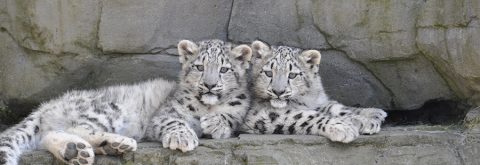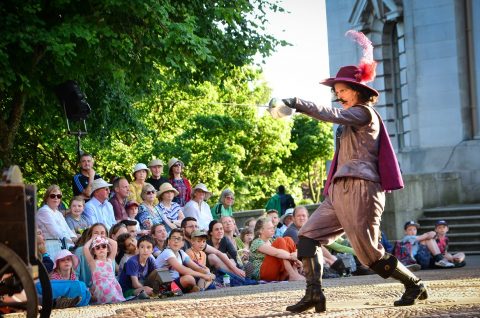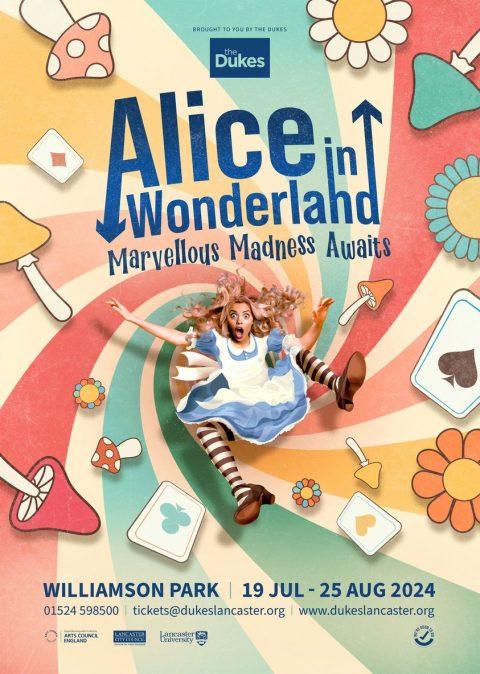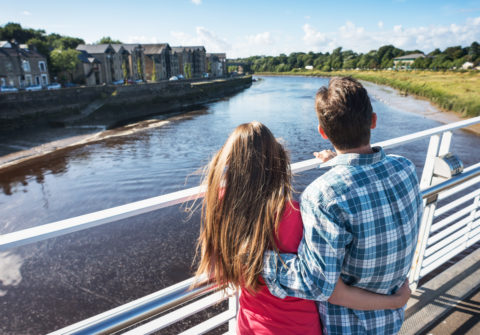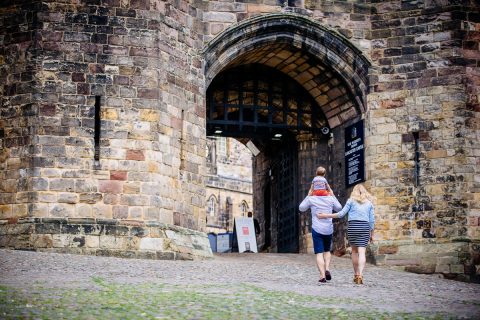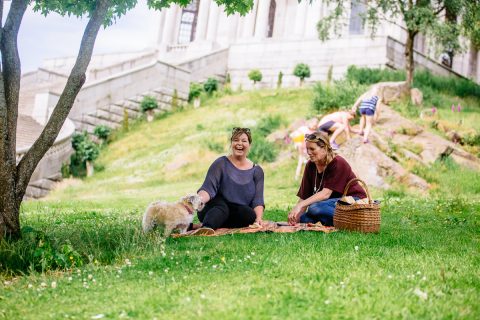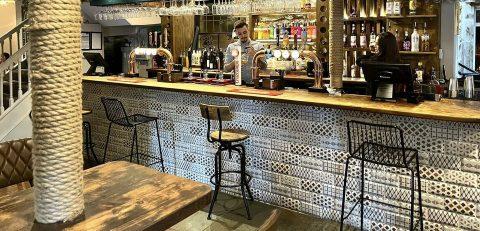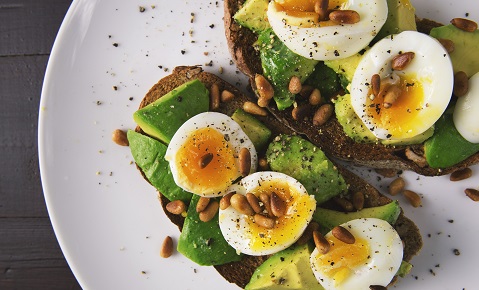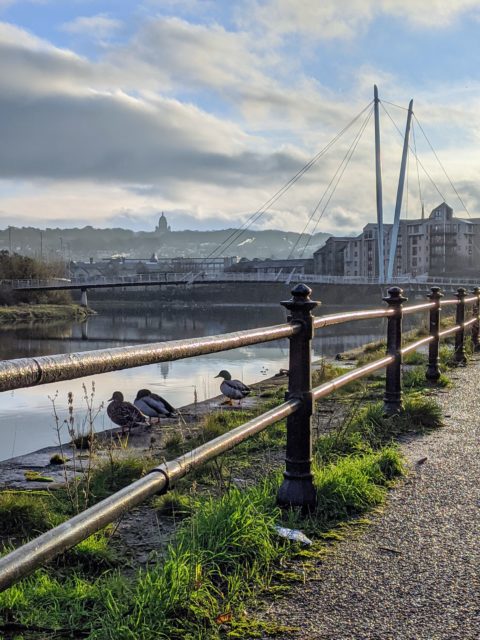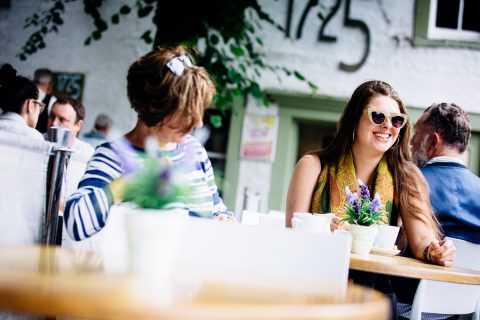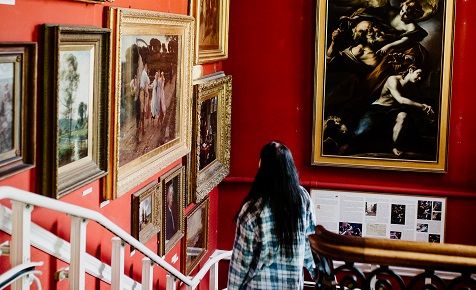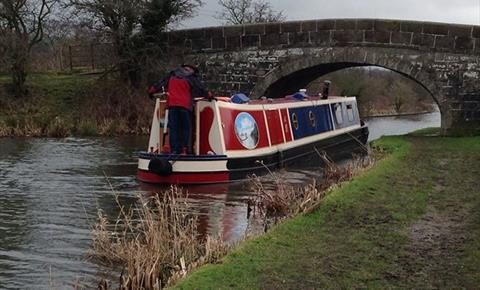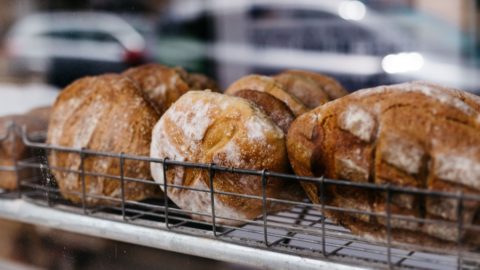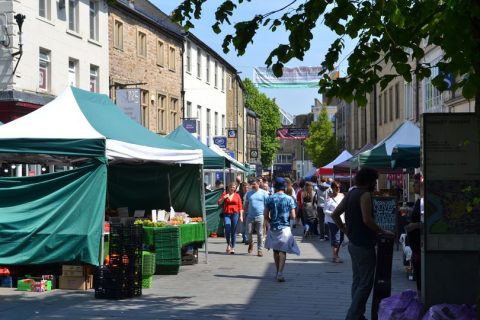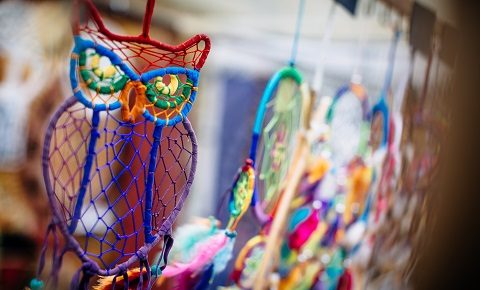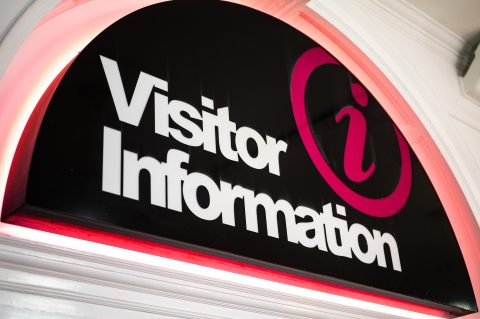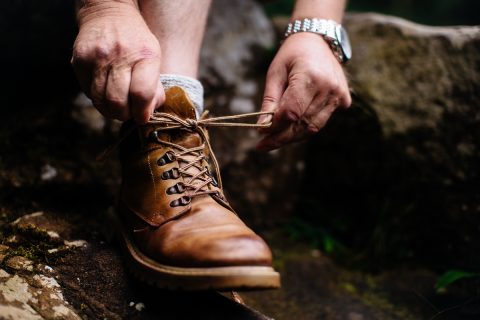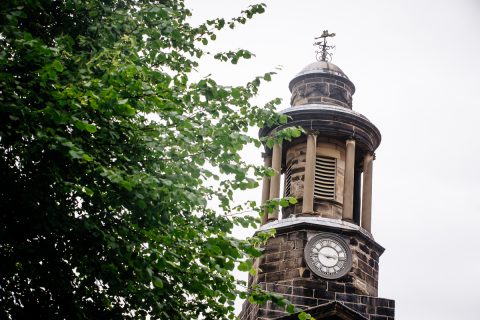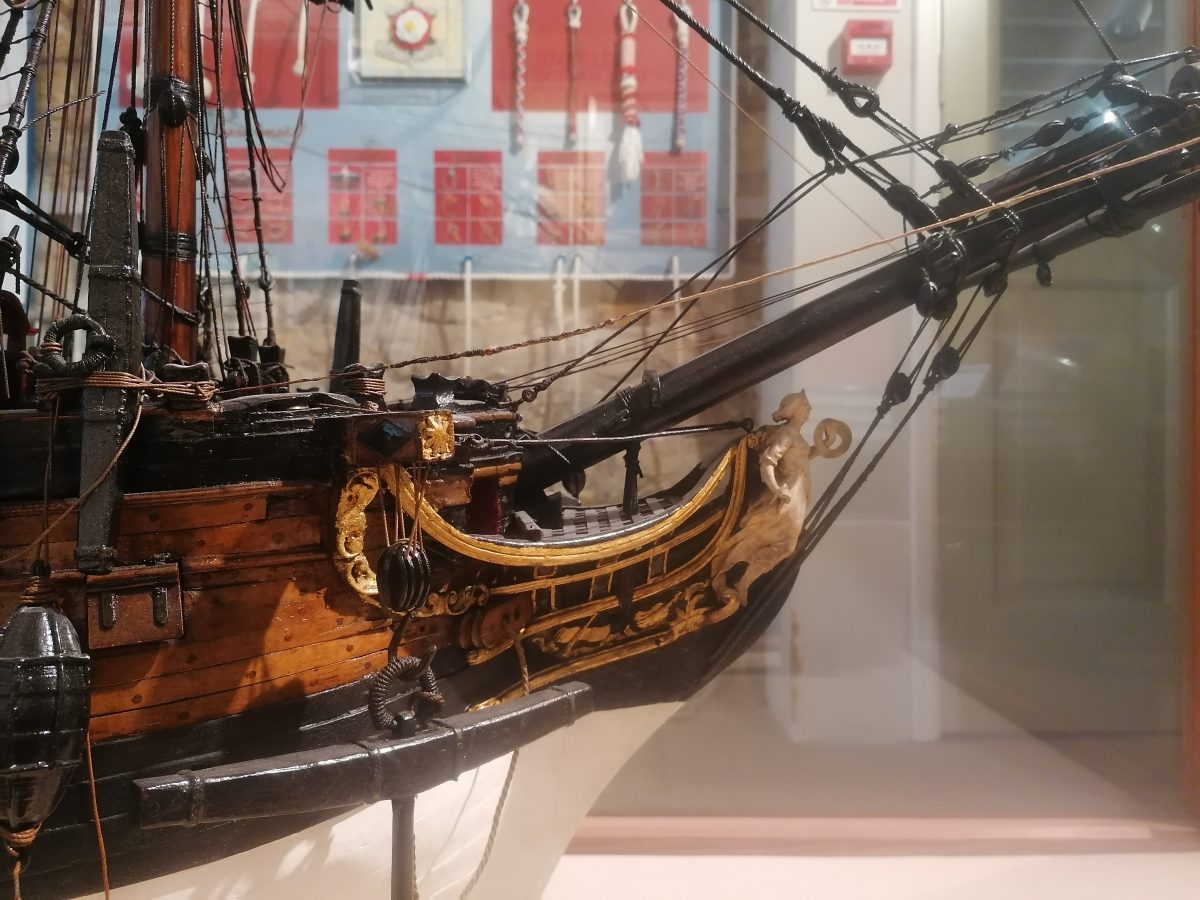The Transatlantic Slave Trade
The port of Lancaster was, at one time, the fourth most prolific port involved in the transportation and trade of enslaved Africans.
Many local families were involved in the trade as plantation owners, slave ship owners or share-holders, merchants in slave-produced goods, and in lots of other ways.

Lancaster from Skerton with a Sailing Ship (unknown artist), Lancaster City Museums Collection
What is Slavery?
Slavery is when one person is ‘owned’ by another. A slave is not treated as a person. Instead, they are treated like property that can be bought and sold. The people who think of themselves as slave ‘owners’ force their slaves to work for nothing. Slavery has existed throughout human history and across many different civilisations.
Slavery existed in Africa before the arrival of Europeans, but the Transatlantic slave trade massively changed the scale of the trade in human beings and the way it was done.
What was the Transatlantic slave trade?
The Transatlantic slave trade involved the capture and enslavement of millions of Africans. They were transported across the Atlantic Ocean where they were made to work for free, for the rest of their lives, often for cruel masters and in terrible conditions.
The Transatlantic slave trade was also known as the Triangle Trade, as it had three stages:
- Manufactured goods from Europe such as cloth, beads, and guns were taken to Africa where they were exchanged for captured people.
- The captured Africans were transported to the Americas. This was known as the middle passage.
- Finally, raw materials and goods produced by slave labour such as cotton, sugar, rum, mahogany (wood), and tobacco were brought back to Europe from the Americas.
What was Lancaster’s Role?
- Between 1700-1800 at least 122 ships sailed from Lancaster to the coast of Africa.
- Merchants with Lancaster connections were involved in the capture and sale of around 30,000 people, making the city the fourth-largest port in Britain involved in the Transatlantic slave trade.
- Slave ships were built at Brockbank’s shipyards in the early 1700s.
- Lancaster slave traders and merchants imported slave-produced goods from the West Indies such as mahogany, sugar, dyes, rice, spices, coffee, rum, and later cotton for Lancashire’s mills.
- Fine furniture, gunpowder, woollen, and cotton garments were produced in and around Lancaster and then traded in Africa for slaves or sent back to the colonies.
- Young men from Lancaster’s slave-trading families worked as agents across the West Indies. Over generations, these families accumulated land, property, plantations and slaves. Slave traders and their descendants invested their inherited fortunes in mills and businesses.
- If we trace these histories, we can see how the profits from slavery and the slavery business in the West Indies and the Americas, financed the city as we know it today.
- Lancaster became a wealthier city because of slavery. So, it was one of the few towns in Britain that sent a petition to the government in favour of slavery!
Captured Africans
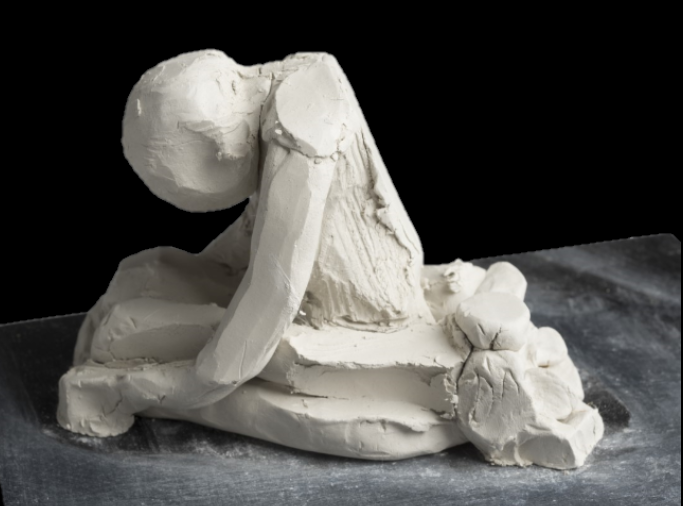
Maquette for Captured Africans, Kevin Dalton-Johnson, Lancaster City Museums Collection.
Lancaster was the first city to dedicate a memorial to each of those African people who lost their liberty, and all too often their lives, due to the slave trade.
Captured Africans was created by Manchester-based artist Kevin Dalton-Johnson with support from mosaic artist Ann McArdle and young people involved in the STAMP programme in 2005.
The sculpture reflects the decks of the Lancaster slave ships, with their cargoes and was unveiled on Columbus Day, October 10th 2005.
“Historical accounts focus on the slaves, but do not focus enough on the Slave Trade itself. For this reason, I have chosen to focus on the Slave Trade and put the Slave Trade itself on exhibition as an exhibit.”
(Kevin Dalton-Johnson)
Teacher’s Resources from Lancaster City Museums
You can download our Teacher’s Resource Pack on the Transatlantic slave trade by visiting our dedicated page here.
Students researching museum approaches to interpreting the Transatlantic slave trade can find answers to Frequently asked questions here.
Resources for Further Information
Lancaster Slavery Family Trees Project (Lancaster Black History Group)
International Slave Voyages Database
Stigma Machine by Professor Imogen Tyler
International Slavery Museum, Liverpool

